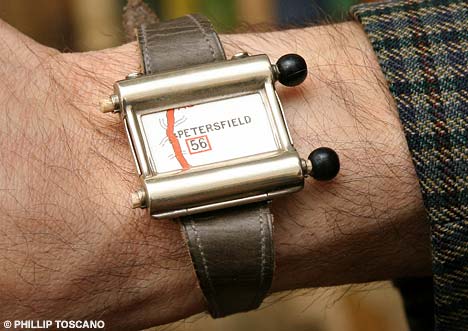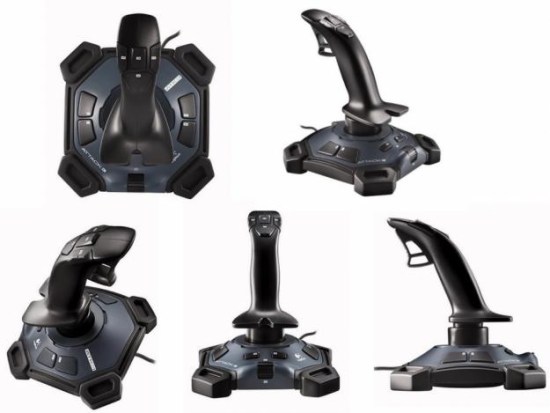They are notorious for guiding exasperated motorists down footpaths, into ponds or to the wrong city entirely.
But the modern-day sat-nav is likely to pose far fewer problems for lost drivers than its 1927 forerunner.
The Plus Four Wristlet Route Indicator, which has gone on display at a National Trust house, is thought to be the first navigation device for motorists.

Eccentric invention: the Plus Four Wristlet Route Indicator’s tiny interchangable paper maps seem quaint compared with their modern counterparts
Worn like a wrist-watch, it is loaded with a tiny paper road map that is rolled across the face by adjusting two small black knobs.
It comes with set route maps, such as London to Bournemouth and London to Edinburgh, and the driver winds the knobs to move the map on as their car travels further.
When motorists wish to turn off the road, they have to pull over to replace the map with another map that corresponds to a number on the junction.
The ingenious but fiddly device was never mass produced and would have only been used by the tiny section of the population who could afford cars.
It also has a function to allow the wearer to keep golf scores, which indicates it would have been worn by a Bertie Wooster type of person from P.G. Wodehouse’s famous novels.
It is one of the key attractions at the Curious Contraptions exhibition of eccentric inventions from the Victorian and Edwardian eras, at Standen House in East Grinstead, East Sussex, on various dates until 1 June.
Owner of the collection Maurice Collins, 73, from Muswell Hill, London, said it was of his most unusual items.
“It’s an amazing invention and I have never seen another one like it,” he said.
“The idea is that if you want to go from London to Bournemouth you put that map into the watch and then as you drive along you wind the device to keep pace with where you are.
“It is very amateurish and very simplistic.
“Sadly I’ve never tried it myself and I’m not sure how successful it would be as a navigation device.
“It’s a bit of an eccentric invention.
“It’s the sort of thing you can imagine Bertie Wooster using and then his butler Jeeves having to dig him out of a hole.”
The wristlet would have cost around £5, which in today’s money is about £45 to £50, Mr Collins added.
It comes with around 20 maps but more could be ordered to cover the entirety of the country. Most of the set journeys start from London.
Christopher Hill, visitor services manager at Standen House, said it was an ingenious idea.
“It is a great idea but it would have been quite fiddly to keep winding the map on as you drove and when you wanted to change a map you would have to pull off the road,” he said.
“It would probably have been used by people who were taking day trips from London and would have been sold in car shops alongside driving gloves and maps.
“Modern sat-navs cause a lot of problems but I think they might be a bit more reliable than this gadget.”
Other gadgets on show at the nineteenth century exhibition include a hem measurer, a brothel clock, which helpfully projects the time onto the ceiling, and the portable desk for writing while on a train.


